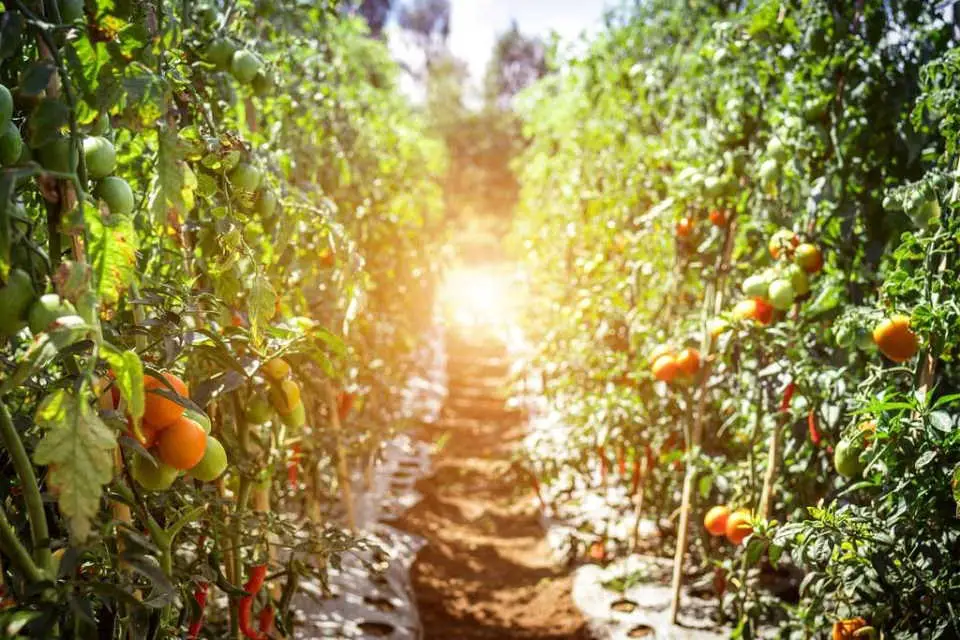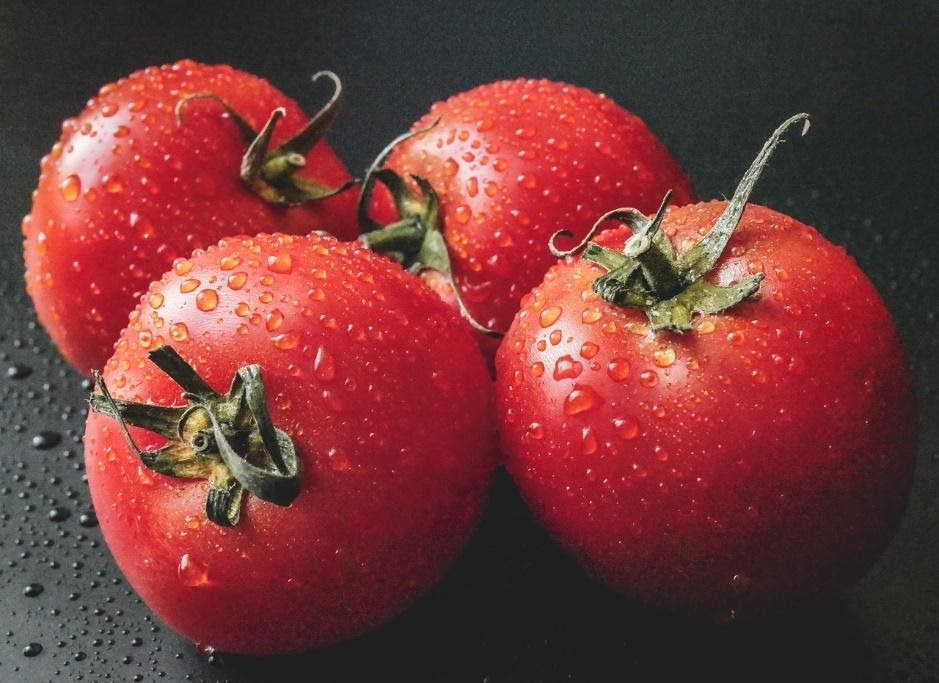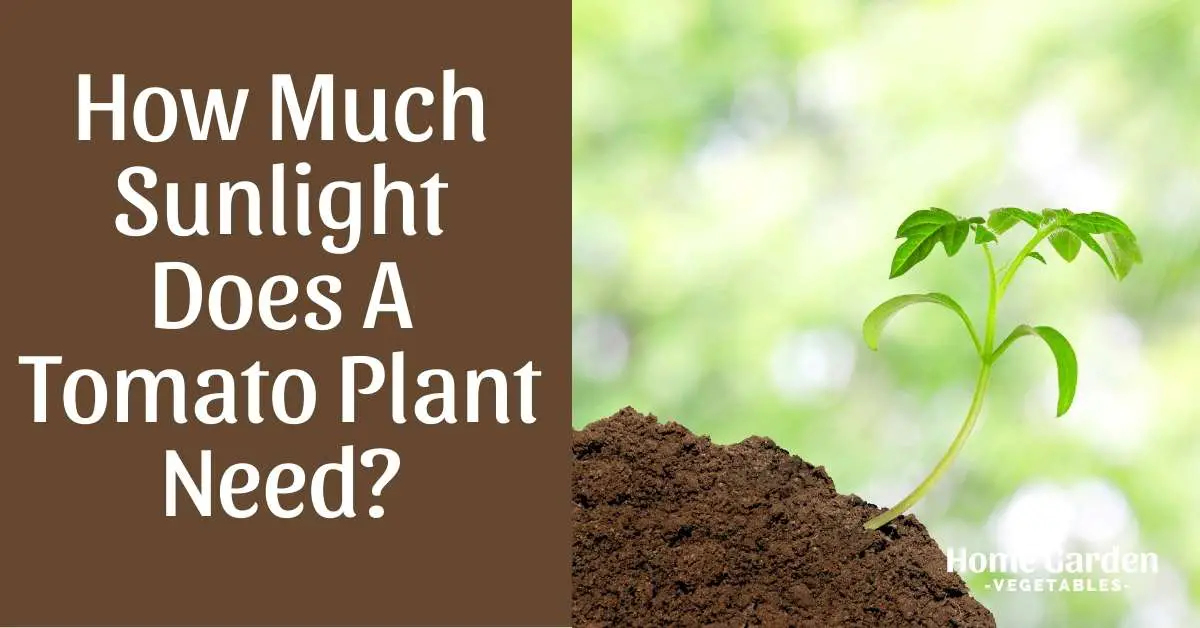Tomatoes are one of the most popular summer crops. These juicy and nutritional vegetables have numerous health benefits and are a brilliant source of many nutrients. Tomatoes are rich in nutrients such as antioxidants, vitamins, calcium, and potassium- among countless others. They are an ideal pick for a novice gardener looking to fall in love with gardening.
However, it is not the easiest one to cultivate. There are many problems that a gardener faces when cultivating a fresh crop of tomatoes. Among these problems, light duration tops the list. Many gardeners do not know how much sunlight a tomato plant needs.
Reader Poll: What online courses would interest you?
As mentioned before, different varieties require a varying duration of sunlight. To guide you through all these problems, we have written a comprehensive blog, outlining the requirements for growing a healthy tomato crop.

Sunlight Requirement during Different Growth Phases
Tomato crops require a different amount of sunlight at different stages of their life. We will go through each phase separately.
Subscribe to our newsletter!
Germination Phase
During, and immediately after germination, the tomato plants require about 5-6 hours of light with moderate intensity. Anything less than that will cause the tomato plant to wither and die in its infancy.
In the early stages of plant life, sunlight is required for growing the vegetative organs of the plants. The plant requires a lot more water and nutrients at this stage of the life cycle, but not much light.
Fruiting Phase
The phase during which the tomato starts producing fruit buds is referred to as the fruiting stage. The recommended duration of sunlight during this phase is 9-11 hours per day. We suggest you keep your plants in a shaded area during this phase because tomatoes often get sunscald during the fruiting phase.
Ripening Phase
The ripening phase is the final phase of the life cycle of a tomato. During this phase, the tomato develops a dark red color. However, the plant does not require much light during this phase, since ripening is governed by a hormone known as ethylene, and sunlight does not affect the ripening.
Different Types of Sunlight
Different tomato types require different kinds of sunlight exposure for ideal growth. There are typically two types of sunlight: morning light and afternoon light. We’ll go through each of them in this part of our blog.
Morning light
Morning sunlight is known to provide the plant with high-intensity light which lacks heat. Based on these facts, it is recommended that you consider morning exposure if you live in a region with a warm and humid climate.
The light from the morning sun belongs to the blue end of the visible light spectrum, which prompts plants to open their stomata, thereby increasing the rate of photosynthesis.
Afternoon Light
The afternoon light is intense and falls in the Ultra Violet part of the visible light spectrum. Keep in mind that several hours of afternoon sun creates more heat than the morning sun, and therefore if you live in a cold climate, this type of exposure would be beneficial for your tomatoes.
Different Varieties of Tomatoes
Another factor that comes into play is the variety of tomatoes planted. Many varieties require intense light and longer duration than others. Based on their fruiting cycle, there are two main kinds of varieties
Determinate Variety
Determinate varieties possess a single fruiting cycle and form flowers at the end of the cycle; only once in their lifetime. The flowers later on form fruits that mature at the same time. The tomato crop can only be harvested once, after which the plants wither and no longer produce fruits.
Usually, intense sunlight does not pose much threat to these plants. The mature tomatoes at the top protect the younger plants from scorching heat. Therefore you won’t have to worry about the growth of tomatoes belonging to this variety; they tend to grow on their own.
Indeterminate Variety
The indeterminate varieties produce tomatoes throughout the season. They are more popular among gardeners because although they are tough to cultivate, they give a high yield. One problem associated with tomatoes of this variety is that the vines need to be pruned properly, to ensure optimal growth. The plants should be properly spaced; congested plants give poor yield.

Do tomatoes grow better in the shade or intense sunlight?
Tomatoes are day-neutral plants and can grow in both shades and lights. Of course, this depends on the type of variety as well, but typically tomato crop shows good growth in either case. However, it is recommended to grow them in the shade while exposing them to direct sunlight once or twice a day.
Many varieties of tomato plants show better growth in the shade. However, in some varieties, diminished sunlight results in less photosynthesis which leads to reduced glucose formation; a factor that negatively affects plant growth.
Extended exposure to sunlight may cause the soil to lose water quickly via transpiration, even if temperatures aren’t too high.
Light Requirements for Tomatoes Planted Indoors
It is important for tomatoes growing hydroponically to get enough light in order to thrive. Many varieties need 8 – 10 hours of sunlight each day. However, some high yielding tomato varieties may require up to 18 hours of light per day.
Conclusion
Sunlight is essential for the adequate growth of tomato crop. It is recommended to keep the tomatoes in direct sunlight for at least 8-10 hours per day. This light duration differs for different varieties. You can find out the required duration of sunlight for any particular type of tomato by visiting your local nursery. Make sure that the light is not too intense, and has sufficient warmth for the ideal growth of plants- and your tomatoes will do just fine.

